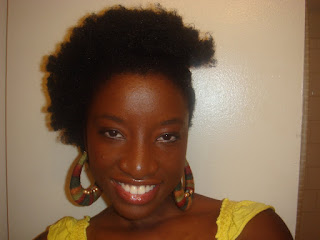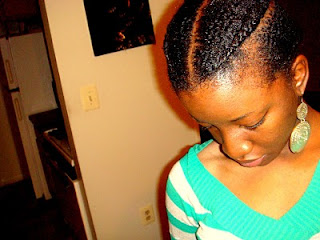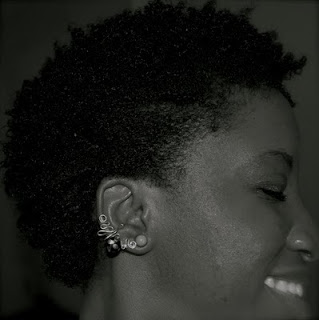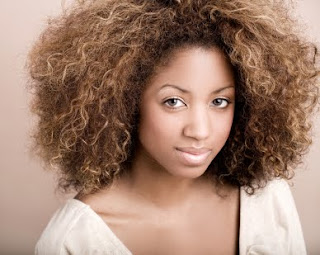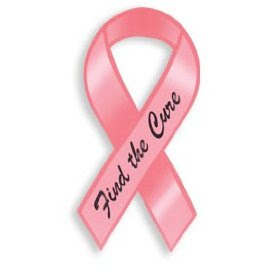I was on public transport a few weeks back when I saw this Decadent Beauty and I had to feature her here.
DB: How long have you been natural and what led you to go natural?
Ariel: I have been natural since February 2010. I choose to go natural because of my kids, I never have time to do my hair also because I feel if your really beautiful inside and out then your hair doesn't matter, and I would stay natural after watching Chris Rock in Good Hair.
DB: What do you think is the best thing about being natural?
Ariel: Its convenient, and it shows the natural beauty of a person with no fake stuff.
DB: What is your current hair care regimen?
Ariel: I just wash,brush and go.
DB: Moisture is so important for black hair. How do you maintain moisture living in such a dry climate?
Ariel: I grease my hair alot but right now trying to find a good moisturizer is difficult.
DB: Do you have any words of wisdom that you'd like to share with transitioners or newly naturals?
Ariel: love your self and know being natural is being you 100% no added fakeness just you and the true beauty within you.
DB: Is there anything else that you'd like to add?
Ariel: I love the comfort of being natural and i love my hair and i love not wasting time and money on products that take away the true beauty of my hair.
Friend Ariel on Facebook.
Tuesday, July 6
Thursday, April 8
Satwian-A Decadent Man's POV
DB: How do you feel about women that wear weaves or wigs?
Satwian: It's not my favorite look on a woman.
DB: How do you feel about women that perm their hair?
Satwian: If it has a fly cut and works for the woman, I say go for it.
DB: How do you feel about women that wear their natural hair?
Satwian: Jill Scott instantly became sexy to me when I saw her on Mo'Nique rocking her 'fro, a short cut or natural hair is sexy to me on woman.
DB: With women that have natural hair, what type are you most attracted to (loose, curls, afro locs) if any?
Satwian: All of the above works for me. I love a woman who is in love with the natural state of her being. It says a lot about her character in my opinion.
DB: Do you like to run your fingers through a black woman's hair?
Satwian: I only touch a black woman's hair when asked to...part of my southern ways ;-)
Check out Satwian's custom handmade jewelry here.
Herbal Conditioning Hair Spray Recipe
Here's a basic and easy recipe for a conditioning hair spray/spritz. It can be used to refresh the hair or as a detangler.
1 c Water, distilled
1 Tbsp Lavender flowers
1 Tbsp Nettle
1/2 Tbsp Chamomile
1 tsp Sage
1 tsp Peppermint
1/2 c Vegetable Glycerin
1 tsp Vitamin E Oil
8-10 drops Essential Oil of your choice (optional)
Infuse the water with the herbs by boiling them over a low heat for about 10-15 minutes. Let cool for 10 minutes then strain infused water into a bowl. Add in vegetable glycerin, vitamin E/grapefruit seed extract/tea tree oil and essential oil. Mix thoroughly then pour into spray bottle.
Wednesday, March 24
Hair Myths & Mockeries
This video was sent to me by a friend. Interesting to say the least.
It then lead me to post the following segment after listening to Monday's episode of NPR's Tell Me More. Guest host, Allison Keyes did a segment called Keep Your Hands Off My Hair, which I'm sure at least 95% of black women can relate to. And of course I have to reference this great article, Can I Touch Your Hair from Womanist Musings.
Share you thoughts.
29 March 2010 Update
I appreciate the discussion this topic has sparked. Here are the some reactions.
It then lead me to post the following segment after listening to Monday's episode of NPR's Tell Me More. Guest host, Allison Keyes did a segment called Keep Your Hands Off My Hair, which I'm sure at least 95% of black women can relate to. And of course I have to reference this great article, Can I Touch Your Hair from Womanist Musings.
Share you thoughts.
29 March 2010 Update
I appreciate the discussion this topic has sparked. Here are the some reactions.
Friday, March 19
Decadent Beauty Ada
DB: How long have you been natural?
Ada: My last relaxer was in April of last year. So I've been natural for roughly a year.
DB: What do you think is the best thing about being natural?
Ada: Oh my. The list is endless. My hair has character, it does its own thing; very unpredictable. My hair breathes...lol! But really, just the fact that I don't have to hide under anything. I do not have to go to extreme lengths to fit a certain mold. I can achieve a bunch of styles with my hair. I can morph into an afro, make it coily, curly or blow out in your face or just plain straight. What is there not to love? Oh and of course I do not have to run away from water!
DB: What is your hair care regimen?
Ada: I wash and condition my hair once a week. I usually mix olive oil and coconut oil into my conditioner. I deep condition twice a month with either Aubrey Organics Island Natural Conditioner
DB: How do you maintain moisture?
Ada: I maintain moisture by sealing my ends with a heavy butter and oil after washing and conditioning. During the week I'll mist my hair as needed.
DB: Any words of wisdom that you'd like to share with transitioners or newly naturals?
Ada: Trasitioners, look for styles that require little to no manipulation because it can get frustrating especially when you start getting a lot of new growth. Also look to do styles that blend in with your hair texture. When I transitioned I wore my hair in straw sets or I'd attach a faux afro puff. I transitioned for six months and BC'd because I just couldn't go any further. My hair was a tangled mess. Do not be afraid to do a BC.
To new naturals, I'll advise to be patient. At that stage you probably are looking for what works for you in terms of products and styles. When you do find what works, trust it will be a breeze from then on. Don't get caught up trying to get your hair to do what it can not do *cough* curl definition *cough*. You have to get to a point where you love your hair with all its hang ups or it will just be a frustrating journey. Please don't be too eager to try the next flaming product. If you find what works for you, stick to it (I need to take my own advice, lol).
DB: Is there anything else you'd like to add?
Ada: That's pretty much it! Feel free to check out my YouTube page. I do cover songs and will be putting up my own originals when graduate school lets me, lol.
Tuesday, March 16
Read Your Labels
It's always wise to check the list of ingredients on your hair, body and face products before purchasing. Read your labels carefully when buying hair, body and face products. Most of the commercially available hair, body and face products today use harmful, potentially carcinogenic ingredients. If you have a reaction to a product that you're using then stop immediately. Listed below are just some of the worst commonly found product ingredients you can put on your hair and body. The more of a particular ingredient you have in a product, the closer it is to the top of the list of ingredients on the bottle:
Petrolatum and Mineral Oil: Commonly known as petroleum jelly. Mineral oil is a derivative of crude oil (petroleum) that is used industrially as a cutting fluid and lubricating oil. Petroleum based products can clog your pores and cause skin eruptions and black heads because it doesn't allow the skin to breathe and release toxins.
Sodium Lauryl Sulfate (SLS) or Sodium Laureth Ether Sulfate (SLES): This ingredient is used in about 90% of all shampoos and products that foam as well as cosmetics, toothpaste and conditioners. It's also found in detergents and surfactants that are commonly used in engine degreasers, car wash soaps, and garage floor cleaners. A small amount generates a large quantity of foam and when salt is added it thickens up, giving the illusion of being concentrated. Since the costs of these ingredients are so cheap they are used in personal care products a lot.
Parabens: are often used in skin and body care products as preservatives. Parabens have been associated with breast cancer and can cause the skin to loose its pigment.
Isopropyl Alcohol: is found in hand lotions, body rubs, hair color rinses, after shave lotions, fragrances and many other body products. It's a pertroleum derived substance that is used in antifreeze and as a solvent in shellac. Isopropyl alcohol is a solvent and denaturant (poisonous substance that changes another substances natural qualities). It will dry your hair out and break it off.
Polyethylene Glycol (PEG): is used not only to thicken products but in making cleaners to dissolve oil and grease. They are often used in caustic spray on oven cleaners due to their effectiveness and are found in many personal care products. PEG's leave the immune system vulnerable by stripping the body and hair of it's natural moisture factor. PEG is a carcinogenic.
Imidazolidinyl Urea and DMDM Hydantoin: These two preservatives release formaldehyde and exposure to formaldehyde can cause dizziness, allergies, loss of sleep, and joint pain among many other aliments. Serious side effects include weakening of the immune system and cancer. Almost all hair, skin and body products contain these formaldehyde releasing agents.
Monday, March 15
Transitioning from Relaxed to Natural Hair
 So you've been thinking about or decided to transition from relaxed hair to natural hair and you're not sure how to go about it. You have two choices, you can do a BC (big chop) and sport your glorious TWA (teeny weeny afro) or transition until all of the relaxed hair is completely gone. If you decided to transition it means establishing a routine to gain and maintain healthy hair while dealing with two completely different hair textures.
So you've been thinking about or decided to transition from relaxed hair to natural hair and you're not sure how to go about it. You have two choices, you can do a BC (big chop) and sport your glorious TWA (teeny weeny afro) or transition until all of the relaxed hair is completely gone. If you decided to transition it means establishing a routine to gain and maintain healthy hair while dealing with two completely different hair textures.When transitioning pay attention to the relaxed ends because if any breaking or splitting occurs it will travel up the hair shaft causing the natural new growth to split as well. Breakage happens at the line of demarcation, this is where your natural hair meets the relaxed hair. This area is prone to breakage because the moisture/protein balance differs between the two textures. So avoid playing in your hair since this promotes breakage and wear protective styles such as braids, twists, bantu knot, straw sets, weaves, wigs, etc. If you choose to wear a weave or half wig then find a way to blend your natural hair with the artificial hair. As your hair grows cut off half an inch to an inch of relaxed hair.
Avoid using direct heat while transitioning since it will damage your natural new growth and you'll have to start all over again. This means avoid using blow dryers, flat irons, straightening combs, and curling irons. When detangling your hair you want to be gentle, take your time, and use your fingers or a wide tooth, seamless comb. If you use your fingers to detangle make sure that your nails are well groomed because a split nail can snag the hair causing breakage.
As stated earlier you want to establish a routine while transitioning. There are three simple ways to help you out when transitioning: co-washing, deep conditioning, and hot oil treatments.
Co-washing (washing the hair with conditioner) this method is recommended nine times out of ten since most shampoos contain sulfates that strip your hair of its natural oils and moisture. You can add whatever carrier and/or essential oils of you liking for added moisture.
The purpose of deep conditioning is to improve the hairs condition and should be done once a week.

Hot oil treatments temporarily repair damaged hair and can help with dry scalp conditions including dandruff.
Hot Oil Treatment
1/2 c dried rosemary leaves
1/2 c olive oil
2 tsp jojoba oil
Combine ingredients in a sauce pan over a low heat until the mixture is warm. Strain into an applicator bottle. Coat the entire scalp, hair (including ends) with the oil mixture. Put on a plastic cap/bag and wrap a towel over that and leave on for 15 minutes. Wash hair thoroughly to remove the oil. NOTE: It's recommended that rosemary not be used if you're pregnant, nursing, have high blood pressure or on children under the age of 2 years.
Remember that moisture is going to be your best friend so using products that contain moisture or ingredients that are natural humectants is going to be your best bet.
Saturday, March 13
Protein Treatments
Loss of elasticity, serious damage and severe breakage are the three main reasons for protein treatments. Hair is made up of keratin, which is a type of protein. When hair is colored, damaged by heat or a chemical is applied to it, protein is lost causing the hair to lose some of it's elasticity and strength.
Much of the daily care and the little extras that you do to create a hairstyle chip away at your hair's cuticle, or outer layer. Protein treatments work to build the hair shaft back up, a monthly or bi-monthly treatment will keep it in shape. You can use products that contain protein to improve your hair's elasticity and strength or create your own. Just remember to balance protein with moisture, because too much protein will eventually dry your hair out and cause shedding and/or breakage.
Basic Protein Treatment #1
1-2 c conditioner (adjust according to the thickness and length of your hair)
1 Egg
2 Tbsp Extra Virgin Olive oil
8-10 drops Peppermint Oil
Basic Protein Treatment #2
1 Avocado
1/2-1 c Plain Yogurt
2 Tbsp Castor oil
5-8 drops Lavender oil
Thoroughly mix ingredients together. Section hair into four parts and apply treatment to each section. Be sure to work the treatment from the root of the hair to the ends. Place a plastic cap/bag on and wrap a towel on top of it so that the body's heat can help penetrate the treatment into the hair shaft. Let sit for 30 minutes and rinse out with warm water.
Friday, March 12
Moisture 101
Moisture is very important for natural hair and is one of the key factors for obtaining and maintaining healthy hair. When hair is dry it feels brittle and hard and it's prone to damage and breakage. When hair is moisturized it feels soft, silky and is more manageable. Natural hair requires a lot of moisture so after each shampoo or co-wash you want to seal in that moisture with an oil of your choice.
Keep in mind that if you're transitioning from relaxed to natural you're dealing with two different textures and that natural hair is dry. Natural hair thrives on moisture and you may notice that at different phases of your transitioning your hair will immediately absorb the moisture you apply to it and you'll have to apply it again. Be sure to moisturize the hair from root to end.
Two basic ways of moisturizing the hair is with water or oil. Water based moisture is usually straight water or a combination of water, vegetable glycerin and essential oils. Oil based moisture consists of shea butter, olive oil, castor oil, sweet almond oil, etc. When moisturizing with oil you may want to take in consideration the type of oil you use during the time of year. For example it's common to use lighter oils such as jojoba, sweet almond, and coconut during the summer and heavier oils such as shea butter and castor during the winter. Bottom line, find out what works for you.
Basic Hair Moisturizer/Spritz
1 cup distilled water
1/2 c vegetable glycerin
8-10 drops lavender essential oil
1 tsp vitamin E oil
Pour and store in a spray bottle. Shake well before each use.
Shea Butter Moisturizer
4 oz shea butter
2 Tbsp coconut oil
2 tsp jojoba oil
1 tsp vitamin E oil
5 drops lavender essential oil
10 drops of rosemary essential oil
Thoroughly whip together with a hand mixer making sure that no lumps of shea butter remain. You can also put the shea butter in the microwave for 30 seconds (no longer than that or you compromise its beneficial properties) to soften it up a bit. Store in airtight container once thoroughly mixed.
Monday, March 8
Hair Care Regimen
Finding a weekly or monthly routine that allows you to maintain the overall health and length retention of your hair can be done in three easy steps.
- Start out by removing processes and products that don't agree with your hair and add those that do
- Find a regimen that is most suited for your lifestyle. As your hair and lifestyle changes your regimen should as well
- Stick with it. Black hair is fragile, which means it tends to be dry and prone to breakage. So it's important to nourish the hair so it retains it's overall health.
Here's an example of a basic hair care regimen.
- Co-wash once a week or two weeks. If you feel the need to shampoo then be sure to use a sulfate free shampoo (rotate shampoos and conditioners so that the hair doesn't totally acclimate and stop responding)
- Deep condition after each wash for 30-40 minutes
- Rinse hair with cool or warm water (rinsing hair with hot water can dry it out)
- Hot oil treatments provide added moisture
- Seal in moisture with a butter (during the winter) or a light oil (during the summer)
- Protein treatment once every six weeks (this is especially recommended for damaged hair)
- Wear protective styles such as twists, braids, wigs, etc.
Wednesday, February 24
Healthy Skin Benefits of Honey
Honey acts a natural moisturizer and helps your skin maintain its softness, suppleness and elasticity. Honey is also a humectant that attracts and retains water thus naturally moisturizing your skin and lending it a natural glow. This is what makes honey a popular ingredient for hair, body and face products. Honey has been known to help rid the skin of blemishes and aid in flushing out toxins. It's also an effective treatment for minor abrasions, burns and is an anti-irritant so it's beneficial for people with sensitive skin.
Honey Facial Exfoliant
1 Tbsp Honey
1 tsp Sugar (for a gentler exfoliant use ground cinnamon)
1-2 tsp Lemon juice
1/2 tsp of coconut oil
Mix all ingredients thoroughly in a small bowl. Dampen face with a warm wash cloth and apply mixture to face. Work the mixture in circular motions. Rinse face off with warm water. Don't forget to tone and moisturize afterward.
Black Hair History
Here's an excellent video on the History of Black Hair done by the lovely YouTuber Chisellecouture
done by the lovely YouTuber Chisellecouture
Also be sure to check out these books on the history of black hair. They make for an informative and interesting read.
Also be sure to check out these books on the history of black hair. They make for an informative and interesting read.
Tuesday, February 23
Healthy Hair Benefits of Honey
Honey Deep Conditioner
1 Tbsp Honey
1 Tbsp Olive Oil, Sweet Almond (or the oil of your choice)
1-1 1/2 cup Conditioner (depends on the length and volume of your hair)
Mix together and apply to hair from root to end. Put on plastic cap/bag and let sit for 20-30 minutes. Rinse out thoroughly with warm water. You can adjust the amount of the ingredients depending on the length and volume of your hair. Remember to use equal parts honey and oil.
NOTE: Over time honey can lighten the hair. If you're looking to darken your hair then use molasses in place of honey.
Thursday, January 28
Forgotten Feet?
Now that the weather has changed, you've forgotten about your beloved feet that you've so lovingly spent the last six months pampering by getting pedicures with beautifully bright colors on your toe nails. The build up of dead skin on our feet can get so thick that it looks like an extra sole and that's not cute.
on your toe nails. The build up of dead skin on our feet can get so thick that it looks like an extra sole and that's not cute.
By giving your feet the same attention all year round lessens the stress when you want to wear those cute little sandals and sling backs
and sling backs this spring and summer.
this spring and summer.
Remember that regular pedicures and the use of a pumice stone
and the use of a pumice stone between visits helps to keep those feet soft and smooth.
between visits helps to keep those feet soft and smooth.
Related Articles:
Money Saving Pedicure
By giving your feet the same attention all year round lessens the stress when you want to wear those cute little sandals
Remember that regular pedicures
Related Articles:
Money Saving Pedicure
Friday, January 8
What Color is Your Bra?
Yesterday Facebook and Twitter were all abuzz about color. Upon further investigation we found out that color issue was to do with the color of your bra (if you wear one) and to raise awareness of breast cancer thanks to my Breast Cancer Blog.
"Wondering what the meaning of those “Black,” “Blue” and “Pink” Facebook status updates are? I was confused all morning, figured I’d sort it out sooner or later, and then I broke down and did some Google work. Found out the hues represent bra colors. So, like every good Facebooker, I played along by peeking in my shirt and updating my status: Beige."
Click here to read the rest of the article.
Susan G. Komen Foundation
National Breast Cancer Foundation
Subscribe to:
Posts (Atom)


